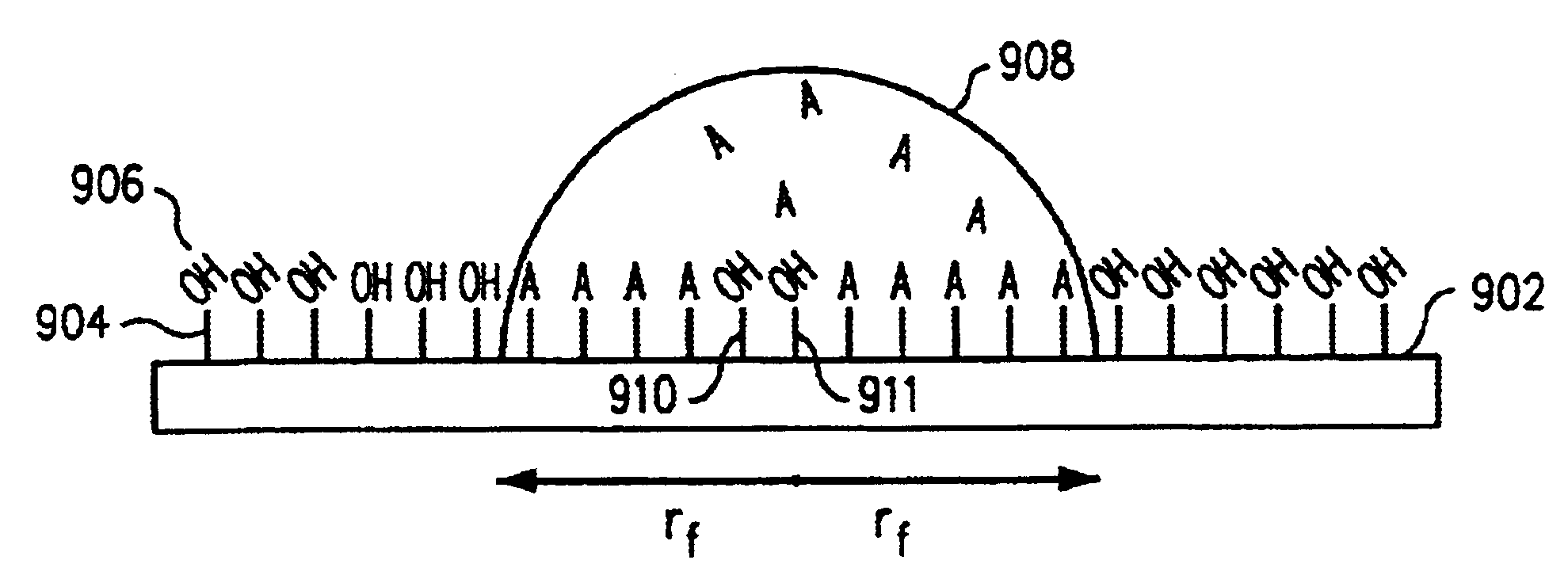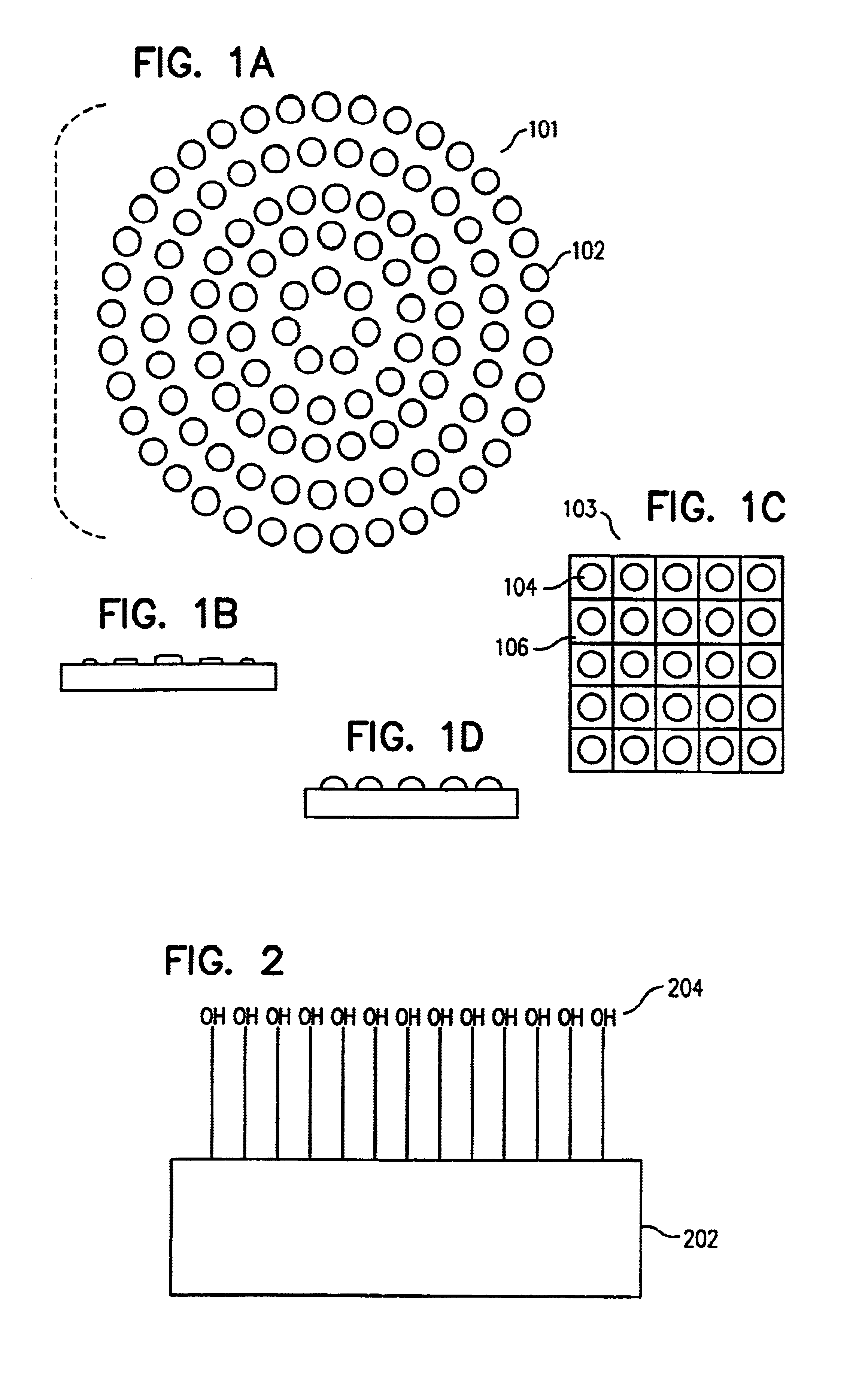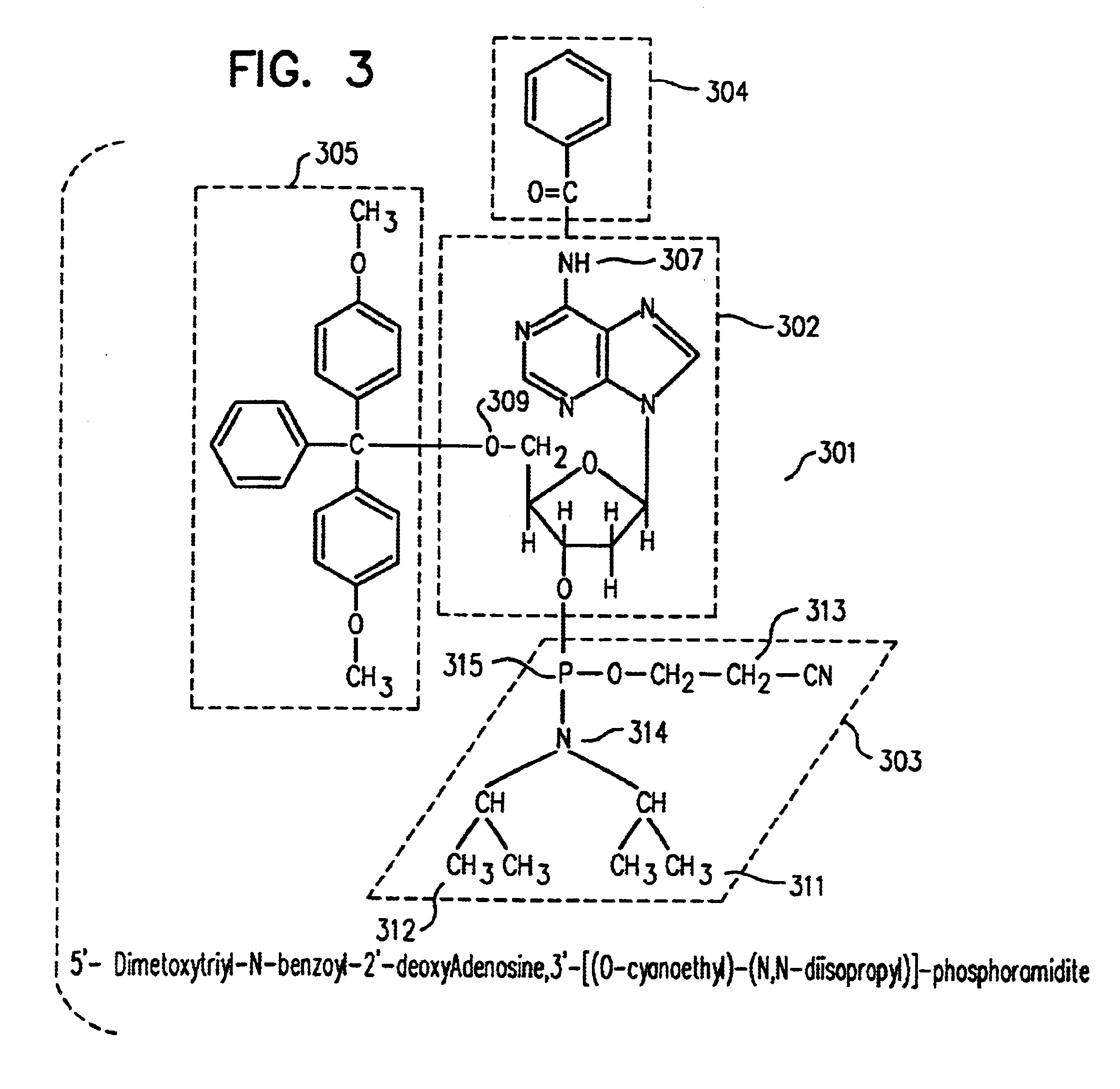Method for synthesizing a specific, surface-bound polymer uniformly over an element of a molecular array
- Summary
- Abstract
- Description
- Claims
- Application Information
AI Technical Summary
Benefits of technology
Problems solved by technology
Method used
Image
Examples
Embodiment Construction
[0021]One embodiment of the present invention provides a method for specifically and uniformly synthesizing desired oligonucleotides within the elements (also called cells, or features) of a molecular array. In one aspect of the present invention, a first droplet containing a specific reactive 5′-protected nucleoside phosphoramidite is applied to the surface of a molecular array substrate at a specified position. As the droplet radially spreads out across the surface of the molecular array, the 5′-protected nucleoside phosphoramidite reacts with hydroxyl groups on the surface of the molecular array substrate to form a single-nucleotide, nascent, substrate-bound oligonucleotide within an element with boundaries defined by the area of the surface of the molecular array substrate covered by the first droplet. After first rinsing away any unreacted 5′-protected nucleoside phosphoramidite, deactivating remaining unreacted surface hydroxyls with a capping agent solution, and finally activ...
PUM
| Property | Measurement | Unit |
|---|---|---|
| Fraction | aaaaa | aaaaa |
| Molar density | aaaaa | aaaaa |
| Molar density | aaaaa | aaaaa |
Abstract
Description
Claims
Application Information
 Login to View More
Login to View More - R&D
- Intellectual Property
- Life Sciences
- Materials
- Tech Scout
- Unparalleled Data Quality
- Higher Quality Content
- 60% Fewer Hallucinations
Browse by: Latest US Patents, China's latest patents, Technical Efficacy Thesaurus, Application Domain, Technology Topic, Popular Technical Reports.
© 2025 PatSnap. All rights reserved.Legal|Privacy policy|Modern Slavery Act Transparency Statement|Sitemap|About US| Contact US: help@patsnap.com



